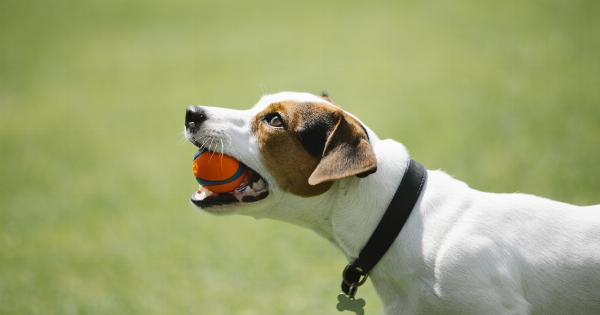Playing fetch is a classic game that many dogs enjoy. It provides great exercise and mental stimulation for your furry friend. However, not all dogs naturally know how to play with a ball or may initially show little interest.
If you want to teach your dog to love playing ball, here are some helpful tips and techniques to try out:.
1. Start with the Right Ball
Choosing the right ball can make a big difference in getting your dog interested in playing. Pick a ball that is the appropriate size for your dog’s mouth and easy for them to carry.
Texture is also important, as some dogs prefer soft rubber balls while others may prefer squeaky or textured balls. Experiment with different types of balls and see which ones your dog prefers.
2. Introduce the Ball Properly
Before you start a game of fetch, it’s important to introduce the ball properly to your dog. Show them the ball, let them sniff it, and give them praise and treats for showing any interest.
This helps create positive associations with the ball right from the beginning.
3. Use Positive Reinforcement
Positive reinforcement is an effective training technique that can be used to teach your dog to love playing with a ball.
Whenever your dog shows any interest in the ball, whether it’s picking it up or simply sniffing it, praise and reward them with treats or verbal praise. This helps reinforce the idea that interacting with the ball is a positive and enjoyable experience.
4. Make it a Game
Instead of simply throwing the ball for your dog to fetch, make it a fun and engaging game. Use an excited and animated voice to get your dog’s attention and create excitement around the game.
You can also incorporate commands like “fetch” or “get the ball” to help teach your dog the expected behavior.
5. Start with Short Distances
When first teaching your dog to play fetch, start with short distances. Toss the ball a few feet away and encourage your dog to go after it. As they become more comfortable, gradually increase the distance.
This prevents your dog from becoming overwhelmed and ensures they have a positive experience right from the start.
6. Use a Long Leash
If your dog is struggling to understand the concept of fetch or runs off with the ball instead of returning it, try using a long leash. Attach the leash to your dog’s collar or harness and hold onto the end while playing fetch.
This allows you to gently guide your dog back to you if they don’t return the ball on their own.
7. Incorporate Training Sessions
In addition to playing fetch, incorporate short training sessions during your playtime. Teach your dog basic commands such as “drop it” or “release” to encourage them to let go of the ball when you ask.
This not only makes the game more interactive and mentally stimulating but also helps reinforce obedience training.
8. Play in a Fenced Area
If your dog tends to run off with the ball or gets easily distracted during games of fetch, it’s a good idea to play in a securely fenced area. This way, you can focus on teaching your dog to fetch without worrying about them running away.
A fenced yard or a dog park can be great locations for practicing and perfecting your dog’s fetching skills.
9. Keep Sessions Short and Fun
When teaching your dog to love playing ball, it’s important to keep the sessions short and fun. Dogs have short attention spans, so aim for several short sessions throughout the day rather than one long session.
This helps prevent boredom and keeps your dog engaged and excited each time you bring out the ball.
10. Be Patient and Persistent
Every dog is different, and some may take longer to learn to love playing with a ball. Be patient and persistent in your training efforts. Celebrate small successes and don’t get discouraged if progress is slow.
With time, consistency, and positive reinforcement, your dog will likely develop a newfound love for playing ball.






























